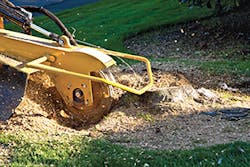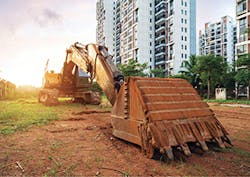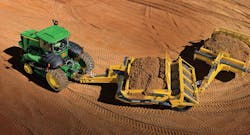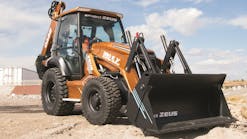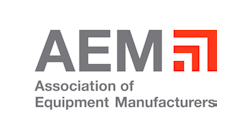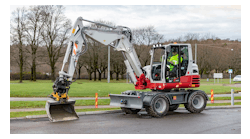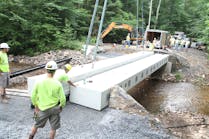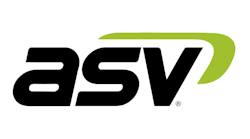Few would argue that the western US forest fires garnering world attention are clearly a clarion call to reconsider our relationship with the natural world. For many, these tragedies underscore the need to reexamine how (and ask, perhaps, if it is always prudent) we can best live side by side with natural resources. But if we do, it is even more imperative to do so by reducing risk to the natural landscape and to protect human life and personal property.
Throughout the world, a confluence of events—fire suppression, logging, and development—have, in many cases, created a precarious natural environment whose fragility is increasingly susceptible to destruction, with the consequence of enormous recovery time, should it occur.
Land management, however, is not (nor should it be) just the task of reacting to disaster-related events. Contractors building new roads and pipelines, clearing for residential developments, expanding commercial properties and any number of projects must all inevitably engage in land clearing and debris removal. Today’s onsite machines that process logs, brush, and all other organic wood waste make this job easier, greener, and more efficient than ever before.
Customers Appreciate Efficiency, Quality
Recycling and Forestry Marketing Specialist Matt Eul, of Vermeer Corporation, reports the customer success of their grinders. He cites Homer Industries, an Illinois-based company with roots in the tree service market is now an extensive land clearing operation, operating a fleet of 400 pieces of equipment to handle the job.
According to Homer Industries COO, Todd Hahn, “The business went from having one to two loads of chips per day to producing 20-plus loads every day.”
“By adding a few more pieces of equipment, we were able to create a new service for current customers and establish several new partnerships.”
He says their flagship operation is “receiving raw material from land clearing operations and we have also opened our yard up to other tree care professionals, municipalities, and landscapers for wood waste disposal. The material is then turned into a variety of mulch products, including playground surfacing, color-enriched mulch, and hardwood mulch.”
Hahn says they rely on the exceptional performance of their Vermeer TG7000 tub grinder and three Vermeer TG9000 tub grinders to meet that need.
“We use all tub grinders at our yard as they are fast, efficient, and can handle the variety of material we receive from land clearing operations,” he says, and explains the machine capacity.
“The TG9000 features a large diameter opening with an inside diameter of 11 feet, which allows our crew to process large pieces of material and also regrind material processed on job sites quickly. Also, the Vermeer patented thrown object restraint system (TORS) helps limit the amount of thrown debris while working.
“It’s a great safety feature in the yard and when we have one of our grinders working in the field,” adds Hahn.
On their land clearing operations, Hahn describes a recent interstate expansion project that involved clearing 21 miles of right of way for a roadway lane expansion.
“This was rough terrain and we processed a lot of big timber, and after large material is cut, it’s fed through the TG9000. Then we blend that with other materials so that it can be prepared for bulk shipping or bagged as a commercial product.”
Choosing Vermeer was based on several factors, Hahn says.
“We chose Vermeer tub grinders because of the quality of the machine build, as well as the support we get from Vermeer Midwest, our local dealer. When Homer Industries started, it was a constant struggle to keep up with demand, so we didn’t have room for downtime,” he says.
“Vermeer Midwest’s Aurora location is just 20 minutes from our facility, and I really could, at times, get a mechanic from there to the yard here quicker than I could get one of our guys. So, service has been over-the-top.”
Solving Someone Else’s Problem
When landfills began banning yard waste dumping, new companies emerged, usually evolving from related waste or recycling markets, to address the need for yard waste disposal. One yard waste transfer station in West Chicago, IL, observed how “Landscapers who were dropping off yard waste left with empty trucks,” says Charles Murphy, company owner of Midwest Compost. Today, after investing in the Vermeer TG7000 tub grinder, their customer dropoff is no longer an empty return trip.
“Over the years I had learned a lot about recycling, and we began converting the collected raw material from branches, limbs, and logs into mulch products. At first, we rented a Vermeer grinder as we began recycling this wood waste, but we then invested in the TG7000,” reports Pat Murphy, operations manager for Midwest.
Having a tub grinder onsite allowed Midwest Compost to increase and control their production of mulch. Eventually, their TG7000 tub grinder was operating daily.
“Things really took off when we made an investment into the right equipment,” says Murphy. “Owning our own grinder allowed us to expand the types of mulch we could offer our customers, and that brought in more wholesale and retail opportunities.”
Midwest Compost makes its own single, double, triple ground, and dyed products with materials they source locally. The company takes in logs and wood chips from several surrounding municipalities and tree care companies, and they can pick up material from other places, like construction sites, in the area.
With a steady supply of tree logs and brush, owning the onsite Vermeer grinder delivers another benefit.
“We can offer our customer the option of natural hardwood,” explains Murphy.
“Most of the popular commercially-available dark brown mulch is just dyed pallet wood, but we can offer real hardwood. It is our best seller now because it looks great and offers more nutrients for the soil and plants.”
He adds that the Vermeer TG7000 works practically nonstop in their yard. “Rain, shine, or snow, we work from August through February, getting ready for spring, and with this grinder, we can keep up with the needed volume to meet customer demand.”
Murphy says prior to investing in the tub grinder he did his homework and confirms that he found “Vermeer manufactures quality machines that last and I have valued the relationship we’ve established with the company.
“They bend over backward to make sure we get what we need when we need it and they came out to make sure my guys were trained and that makes a big difference.”
Emphasis on Robust
The boldface type on words like “monster” and “massive,” plus the proprietary marque names HogZilla and ArmorHog, more than politely suggest that the Sabetha, KS-based CW Mill grinding machines can tackle the toughest of jobs.
Tim Wenger, the vice president of Sales, says CW Mill “offers the market the best diesel and electric powered grinders in the industry.”
He adds that the company now manufactures 14 standard HogZilla models ranging from mid-sized to massive and includes self-propelled track driven and self-loading units. In addition to HogZilla’s standard features, Wenger adds, “We always help our customers make sure that their HogZilla is built to meet and exceed their own special needs.
“You can increase your HogZilla performance by outfitting your HogZilla machine with our ArmorHog Extreme Duty grinder parts.”
He adds that it’s critical that customers understand how grinders are set up as either a rigid hammer or a swing hammer type and know the different cutting edge tips.
Rigid hammers, for example, are held in place by two rods, multiple bolts, welding, or other retaining mechanisms, and their cutting edges are rigid and not flexible. Swing hammers are held in place by a single rod and this allows them to swing outwards when the mill spins and will flex back if it strikes a harder material.
Wenger explains that rigid hammers are considered more aggressive but, since they can’t react to an encounter with a hard and ungrindable material, can suffer damage. As the swing hammer flexes in both directions forwards and back, most rotors require rod impact bushing in front and behind the swinging hammer.
As to cutting edges, Wenger explains that weld-on tips, which do not break off or become loose when contacting an ungrindable surface, can be used for either a rigid or swing hammer application. However, over time, these tough carbide tips do need replacing, which is more labor intensive than the bolt on types. Bolt on tips are used only for rigid hammer applications and can come with multiple edges; however, they have a lower tolerance for that unexpected encounter with a contaminated feed. He adds, “Our ArmorHog parts can be used on all aftermarket machines.”
Wenger says there are multiple benefits for contractors investing in an onsite machine.
“Project waste does not need to be transported away from your site; you simply dispose of the debris and the output can be made to the size you want by virtue of the processing screens. Processing onsite eliminates further impact on the environment with more trucks hauling, the cost of diesel fuel, and the labor to load up the trucks.” However, depending on whether contractors choose a horizontal or tub mill grinder, there are additional considerations.
“Horizontal grinders require some finessing in that materials are fed in, but these are perfect for long, pole-like logs, but not roots and stumps, which are best suited for the tub grinder. Horizontals also are less easy to maintain simply because of their design that can require a pretty significant disassembly when compared to tub grinders. Plus, at high speed, you need to make sure that there is space for safe throw out if the machine encounters a piece of large rock, metal, concrete, or anything else that must be ejected.”
Should this occur, however, Wenger says both styles of machine are available with wireless remote systems. Attentive operation of the machine is supported with a remote control ability to help the operator to make quick adjustments and proactive operational maneuvers when non-wood items are encountered.
He says that advantage of the HogZilla tub grinder is its finned rotation that accommodates large and odd-shaped materials; its constantly changing position delivers a high rate of production in output.
“We discuss at great length each customer’s needs: the intended uses and the size of their projects. Our job is to help them invest in the grinding machine that is going to do the most work, at the rate of efficiency they need, in the space allowed.”
Location and Convenience
Having land machines onsite “is very important,” says Lee Smith, product manager/application specialist of FAE, Advanced Shredding Technologies.
“By using the correct machine you can save time, processes, and most importantly, dollars,” says Smith.
“By using a combination of our mulcher and forestry tiller, or one of our multipurpose mulcher stabilizers/mulchers, you can clear standing timber and brush and then put the material back into the ground and grind the stump, and it’s all done.”
Every contractor knows the value of time and how the right machine maximizes productivity, Smith adds, and “clearing and grinding onsite is the answer to the costs and impact of hauling and burning that is currently being done all too often.
“By mulching and stabilizing, you can do the work of a tree company, a dozing/excavation company, and the work of hauling. Also, you can optimize the advantage of having a ready supply of valuable wood onsite. A customer could have it logged for all usable wood to be removed and turned to lumber or pulpwood, and our machines can be used to come behind and clear all leftover material and slash, leaving your site clean and improving the impact factors on that environment.”
The FAE forestry mulchers come in eight configurations with either a swinging hammer rotor or a fixed tooth rotor whose individual power ranges from a low of 50 horsepower (hp) to a high of 500 hp. The lower powered machines designed for use with low power tractors can clear underbrush and derelict land, while the UMH Mega, designed for the most demanding jobs, can shred trees up to 20 inches in diameter.
“This is the only mulcher/tiller on the market today,” says Smith. However, he adds that when meeting with contractor customers, there is no specific “must have” machine.
“For some smaller contractors doing less demanding jobs, we recommend the UML SSL 150 VT mulcher for compact track loaders. We help contractors select from our broad line of quality mulchers, first by asking them what they are currently using. Then, we ask them what their plans are for growth; we never want to push more, or too large, equipment on a contractor as bigger is not always better.
“Our point is that first you want the work and then the machine, not typically the machine and then find the work.”
Smith says they look at the horsepower of their current unit, or the one they intend to buy, and pair that with the typical job requirements to offer the best attachment for that combination.
“This approach has helped us help our dealers and our contractors grow their businesses. For example, we have one contractor customer that started with one of our smaller heads—the UML SSL VT head—and they have moved up to now owning two of our 275 horsepower PT 300 machines with multiple head options.
“Our goal is not just to sell more machines, but to sell solutions to our customers,” affirms Smith.
A new approach reduces the costs contractors are faced with on a large clearing project, roadwork, commercial forestry, or an extensive pipeline, all of which require continuous removal of trees, stumps, and brush to get the job done. In cases where there is not a strong enough (or close enough) beneficial use market, Matt O’Connor, co-founder of ROI, manufacturers of Envirosaver 350 and Carbonator 500, proposes a concept beyond removal. According to O’Connor, the ROI carbonizer units use a high-temperature burning process that “converts any wood product to biochar, which is an exceptionally desirable end product.
“A significant benefit of using this machine onsite in forestry operations or long-term clearing is that it not only removes the debris but in absence of a nearby end-user of logging or wood removal, the forestry debris typically left to decay can be converted to biochar and become an environmentally desirable product.”
He reports that their track-mounted Envirosaver 350 carbonizing system is powered by a Cat ACERT diesel, weighs nearly 70,000 pounds, and is capable of processing 15 tons of wood waste an hour. At the end of the cycle, that original volume comes out as char “and represents 5 to 7% of the original volume.”
For example, a 32-inch-wide and 9-foot-long log weighing at least a ton will be reduced to 150 pounds of biochar, which can be applied right back to the land it came from. This is a perfect solution for remote onsite work that reduces volume significantly and whose end product benefits the environment.
According to Biofuels Digest, biochar has unique properties setting it apart from other charcoals used for heating or cooking. Its low density water retention capacity and “its ability to promote living microbiology in soils serves to enhance the soil food web.” O’Conner describes what happens in the carbonizing wood process.
“The primary combustion chamber is filled with wood waste and beneath that is an elevated grate where we introduce a preheated under-air.”
This under-air increases the efficiency of combustion in the 27-foot-long, 7.5-foot-wide, and 7.5-foot-tall combustion chamber, and “eliminates inefficiencies from burning just from the top.
“As the flames are sealed in by an over-chamber curtain of air, the top is sealed, keeping smoke and particulate matter from escaping.
“This air curtain is projected at a high velocity across the top of the chamber and does not deflect off but is projected to the opposite wall,” explains O’Connor.
During the burning, the temperature increases in the base material in excess of 2500°F which is where “the paralysis process, as we call it, occurs.
“In this oxygen-starved area, the char falls off the parent material and into the grate below and the char collection pan.”
He reports their ROI units are “the first truly portable carbonizing unit that can realistically handle large volumes of unprocessed material including stumps, branches, limbs, two-by-fours, and leaves.
“My argument to a road or forestry contractor is that this unit lowers their cost of handling wood debris. When you are expanding highway lanes, for example, the wood is trucked away and disposed of. But with the onsite Carbonator 500, disposal is significantly less costly as it eliminates the need for chippers and grinders, their fuel, and labor costs. Plus, it eliminates the overall environmental impact of getting on and off the highway conveying debris to a processor and the land reclamation efforts these trucks may cause in the process,” says O’Connor.
He says these attributes make the ROI units “the perfect star-to-finish onsite clearing solution that also delivers contractors a valuable, economical commodity as well as endurable environmental benefit.”